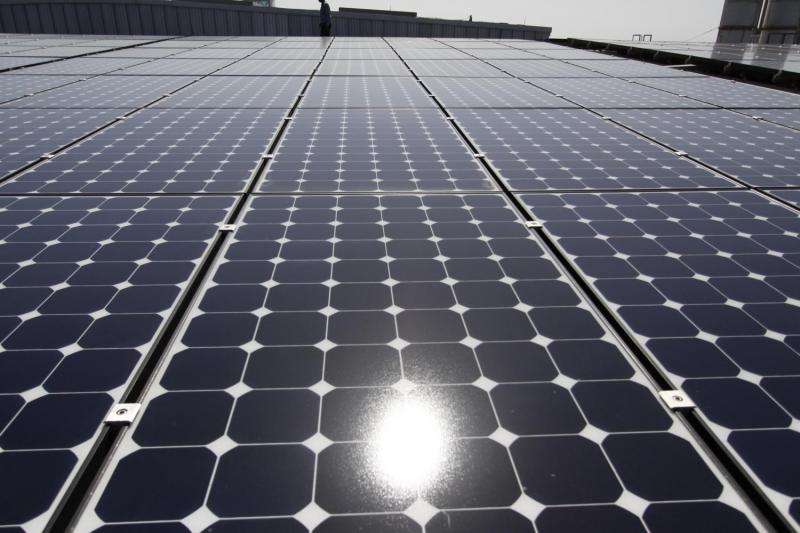Flatter materials have fewer imperfections, which makes for better solar cells and light sensors

Improving the efficiency of solar cells requires materials free from impurities and structural defects. Scientists across many disciplines at KAUST have shown that 2-D organic-inorganic hybrid materials feature far fewer defects than thicker 3-D versions.
Modern-day electronics rely on technologies that can develop almost perfect crystals of silicon; flawless to the atomic level. This is crucial because defects and impurities scatter electrons as they flow, which adversely affects the material's electronic properties.
But hybrid perovskites, an exciting class of electronic material, cannot be constructed using the epitaxial or layer methods developed for silicon. Instead, they are produced using solution-based processes. While this makes them cheaper than silicon, it also makes purity much harder to achieve as defect population and species are sensitive to the processing conditions.
Osman Bakr from the KAUST Solar Center together with colleagues from multiple divisions across KAUST and the University of Toronto, demonstrate that two-dimensional layers of perovskite material can achieve levels of purity much higher than is possible than in their 3-D counterpart. "Two-dimensional hybrid perovskites are a subgroup of the big hybrid perovskite family," explains Wei Peng, lead author and doctoral degree recipient from Bakr's lab. "They can be derived by inserting large organic cations in three-dimensional perovskite structures."
Hybrid perovskites are made up of lead and halide (such as iodine) atoms and an organic component. This class of materials in solar cells has already shown ground-breaking potential for energy conversion efficiency while having low production costs and the possibility for being integrated in flexible devices. This combination of qualities makes hybrid perovskites an exciting material for optoelectronic applications.
Peng, Bakr and coworkers created a 2-D material made of periodic layers of hybrid perovskites with an organic component of either phenethylammonium or methylammonium. Using a solution-based fabrication method, the layers were placed on a gold electrode so the team could measure the electrical conductivity.
Their measurements indicate that the 2-D materials contained three orders of magnitude fewer defects than bulk hybrid perovskites. The team proposes that this reduction is because the large organic cations in the phenethylammonium suppress defect formation during crystallization.
Next, the team demonstrated the potential for their materials for optoelectronic applications by constructing photoconductors with high light detectivity. These results bode well for further advancements in designing and optimizing perovskite solar cells. "A future in-depth study on how the defect formation is suppressed will help our understanding and benefit device performance-targeted materials engineering," says Peng.
More information: Wei Peng et al. Ultralow Self-Doping in Two-dimensional Hybrid Perovskite Single Crystals, Nano Letters (2017). DOI: 10.1021/acs.nanolett.7b01475
Journal information: Nano Letters



















